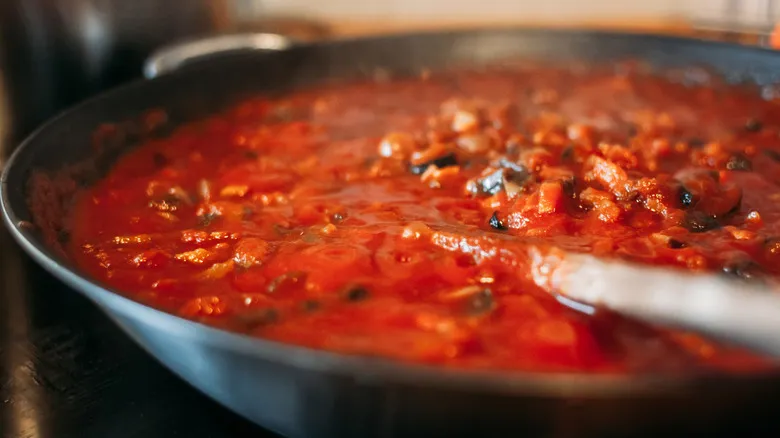How to stop tomato sauce from splattering

While science is indisputable, you don't have to resign yourself to a kitchen splattered with tomato sauce every time you cook. One straightforward solution is to cover your sauce with a lid while it heats. However, if you're looking to thicken the sauce without altering its flavor and want some moisture to evaporate, this approach won't work. Instead, allow your sauce to reach a gentle simmer on the lowest heat setting. This method will minimize the heat that escapes through the surface, thereby reducing splattering.
Using a deeper pot can also be beneficial, as it helps contain any splatters within the pot's walls. Additionally, you can partially cover the pot while leaving a small opening for steam to escape, which will further help manage splatters.
Recommended

The Important Thing To Look For When Buying Club Soda

What Exactly Does Goat Milk Taste Like?

The Reason So Many Restaurants Use Brick Ovens For Pizza

The Scientific Concept That Helped Alton Brown Become A Better Cook
Next up

